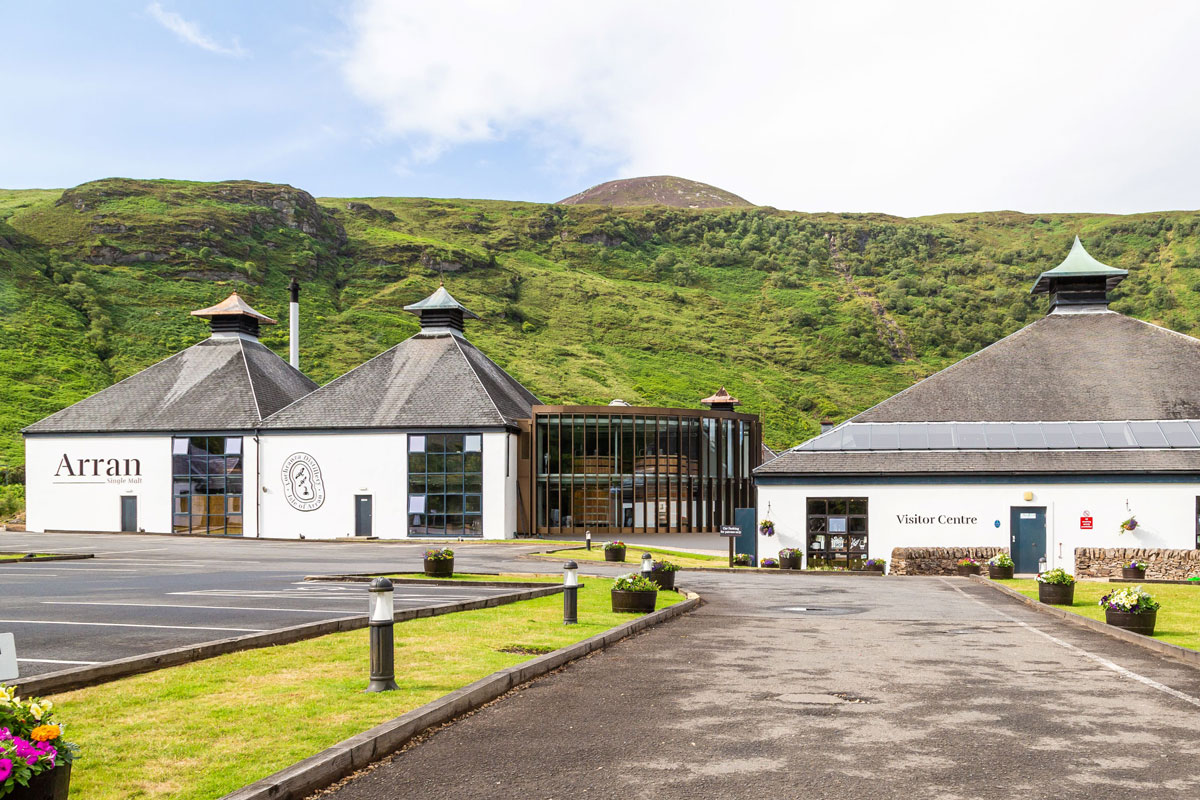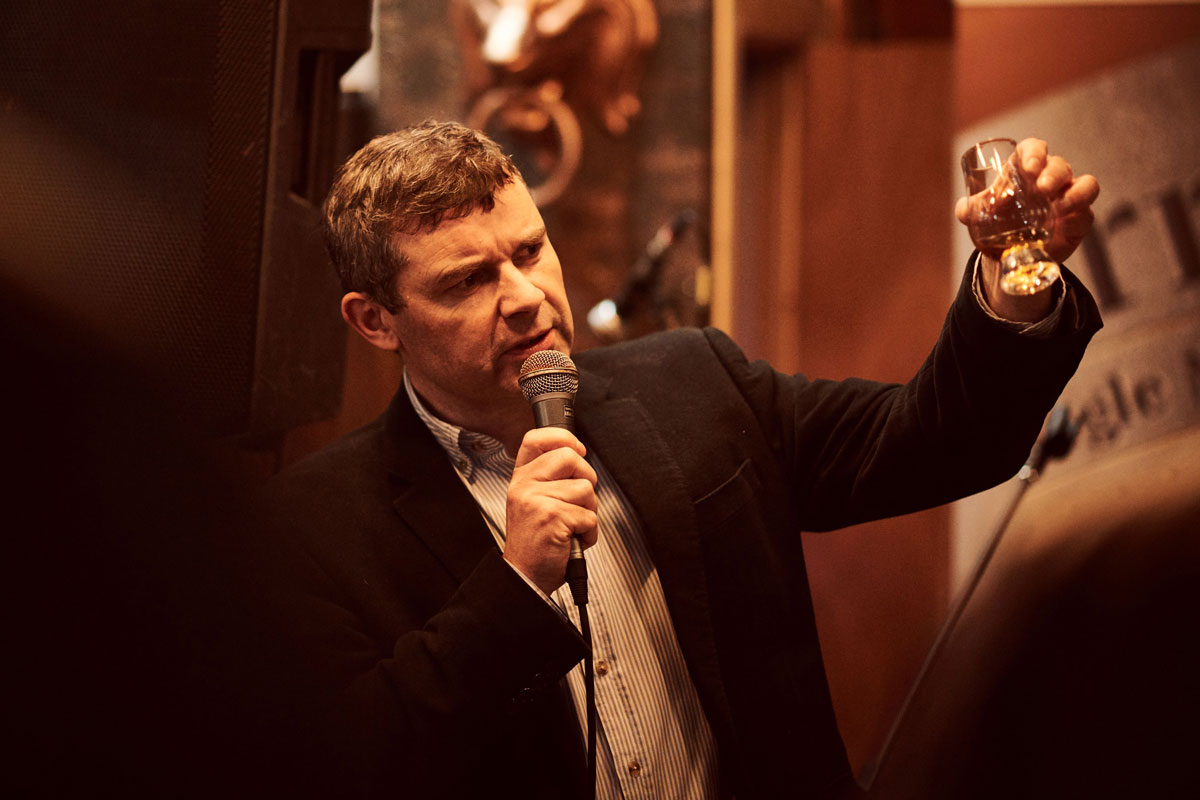 When whisky industry veteran Harold Currie announced in the 1990s that he wanted to open a distillery on the Isle of Arran, people were sceptical, to say the least.
When whisky industry veteran Harold Currie announced in the 1990s that he wanted to open a distillery on the Isle of Arran, people were sceptical, to say the least.
These days the whisky industry is in a boom period, with new distilleries announced on a monthly basis. But things were different in 1993. Demand for Scotch whisky wasn’t what it is now, and many of the industry’s big names were cutting production and even shutting distilleries altogether.
“The industry was actually going through a little bit of a mini-downturn in the mid-’90s,” Isle of Arran Distillers managing director, Euan Mitchell, told SLTN last month. “Production was being cut. Some distilleries were being mothballed. So it was very much going against the grain – no pun intended – to build a new distillery. Particularly on an island.
“People thought Harold Currie, who started the business, had maybe lost his senses or had one or two drams too many.”
Currie, however, was not to be dissuaded, and Isle of Arran’s distillery at Lochranza began production in 1995.
Looking back Mitchell, who joined the company in 2003 from Springbank in Campbeltown, said Arran can now be viewed as the first of a ‘new wave’ of distilleries that would appear around the turn of the new century.
It wasn’t plain sailing in those early days.
Mitchell told SLTN that, as a young distillery with less than a decade to its name, Arran struggled against preconceptions that younger whiskies lacked quality.


“There was definitely a snobbery against younger whisky,” he said.
“Having no age statement was a big barrier to sales in those days.
“If I heard once, ‘it’s a nice whisky, I’ll come back to it when it’s ten years old’ I heard that a thousand times.”
Arran released its first 10 year old bottling in 2005 as a limited edition, adding it to the core range a year later.
But it would be 2007 that would be the real ‘game-changer’, according to Mitchell.
That was the year the company hired former Bowmore distiller James MacTaggart to take over production at Lochranza, as original distiller Gordon Mitchell retired.
“Gordon was a lovely man,” said Mitchell. “A very talented man. But he was very much an old school distillery manager, where it was all about the spirit production – and Arran has always had very good quality spirit running from the stills.
“But James brought in a more all-rounder approach. He was looking very much at the quality of the wood that had been used and for us to look to improve that and lay down more stringent cask recipes for each expression we did. And working very closely with the sales and marketing side as well, to ensure a more joined-up approach to everything.
“James joining was very significant.”
Finance director Maggie Cornwall was another key signing that year, and the trio were able to work together to form a plan for the business moving forward.
In addition to Scotland and the wider UK, that strategy has seen the company build a sizeable footprint in markets including France, Japan, Germany, China and Sweden.
Over the years the company has refined and tweaked its core range and packaging, most recently with an overhaul in 2019.
The core range from the Lochranza Distillery now includes the 10 year-old, 18 year-old and 21 year-old expressions as well as non-age statement expressions such as the Quarter Cask and Sherry Cask.
Mitchell said the rebrand was ‘about trying to find an Arran to fit different niches’.
The vast majority of the distillery’s output is bottled with its natural colour, at least 46% ABV in strength and without chill-filtration – principles Mitchell brought with him from his time at Springbank.
And he maintained that the higher strength has a tangible impact on the wider experience of drinking the whisky.
“At 46% non-chill, compared to whiskies at 40% or 43%, it just has a significantly richer mouthfeel,” he said. “It’s oilier on the palate. It has a longer finish to it. I think it makes a big difference. I think it just enhances the experience for the consumer and shows the spirit in its true light.
“And if consumers want to add a wee bit more water to that then it’s all well and good. They can water it down to their level. That decision’s not being made for them.”
Colour, too, is another aspect of the whisky Mitchell and the team don’t believe in messing around with.
Under Scotch Whisky Association rules, the only thing that can be added to Scotch whisky is a caramel colourant called E150a. The product is used by many distillers to ensure the colour of their whiskies is consistent.
“There just seems no need to add artificial colouring to a product like whisky if you’re using decent enough wood. Why do you need to mislead consumers into thinking a whisky is a different colour, simply through the addition of spirit caramel? The colour tells a story. It tells about the journey of that whisky, from the different types of casks it’s been in. And that’s what consumers are passionately interested in.
“To make a beautiful whisky and then dump some spirit caramel into it at the bottling stage just always seemed kind of wrong to me.”
The same year Arran relaunched its core bottlings from Lochranza, it also opened a second distillery on the island – at Lagg, in the south of Arran.
The company released Lagg’s first whisky last year, with the first two core bottlings – Lagg Kilmory and Lagg Corriecravie – just having been released in recent weeks.
Mitchell said that, although stock has been set aside for a 10 year old bottling in 2029, there is no ‘blueprint’ for what the Lagg range will look like once the stock has matured.
But even in its younger form, Lagg Distillery’s output has helped Isle of Arran Distillers to grow its overall sales this year – with sales up 25% in the first half of 2023.
And the company isn’t standing still. A major addition to the Lochranza distillery has just been completed, which added four new washbacks as well as a lift at the entrance so that wheelchair-using whisky fans can tour the distillery’s production floor for the first time.
Next month the company will also be launching a limited-edition selection of bottlings chosen by Lochranza distillery manager Stuart Bowmore, which Mitchell said will showcase ‘slightly more unusual cask types and flavour profiles from the warehouse’.
As with the company’s core Lochranza and Lagg ranges, he said the limited-edition Signature Series will be affordably priced, so they’re not out of the reach of the company’s fans. It’s something that’s clearly important to Mitchell, as a whisky fan himself.
“As well as being MD of the company I do love the product,” he said.
“If I’m not drinking Arran it kinda depends on the mood I’m in. If I’m looking for something rich and smoky and warming it would maybe be an Ardbeg or a Kilchoman. If I’m looking for a rich, sherried whisky it would probably be a Glenfarclas or the likes of Glengoyne, Tamdhu. I’m also a big fan of Springbank, my former employer, as well.
“Much like my music tastes I’m fairly eclectic when it comes to whisky. I like to try new things.”























